Maintaining a weed-free greenhouse is important for producing healthy and marketable crops. Weeds compete with crops for water, light, and nutrients, and will reduce crop marketability. Weed growth is typically more of an issue in woody nursery crops as opposed to floriculture crops, primarily because most floriculture crops are grown with high-quality media with little to no weed seed contamination. However, weeds can still be an issue, especially in structures with gravel, dirt, or ground-cloth floors. In some cases, gravel will become saturated with organic material, providing favorable conditions for germination. Weeds can also germinate along edges, tears, and worn areas of ground cloth. It is important to frequently scout for weeds. Weeds under benches and on walkways do not directly affect plant growth but often harbor pests such as aphids, whiteflies, thrips, and mites, as well as diseases (Neal 2015) (Figures 1 and 2). A good IPM program will use chemical and non-chemical methods to ensure efficient and economic weed control.
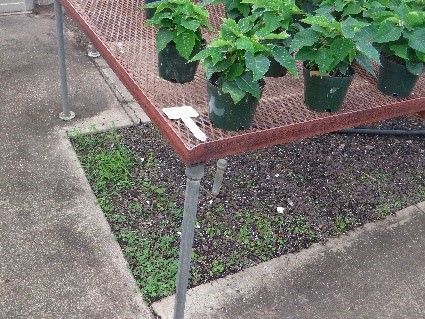
Credit: Jeremy Pickens, Auburn University
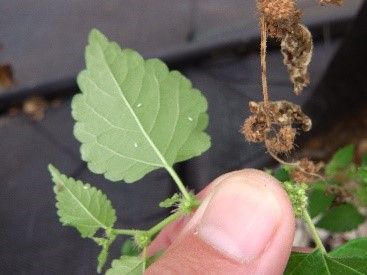
Credit: Jeremy Pickens, Auburn University
Non-Chemical Methods
1. Sanitation and Prevention
The best weed control strategy is sanitation and prevention. Growing plants inside greenhouses offers growers the ability to exclude or reduce the amount of weed seeds that enter. However, weed seeds can still be blown into greenhouses through vents, doors, or windows; carried by water; and brought in on plant material, tools, equipment, animals, and people (Neal 2015, Pundt 2014). Keep weed seeds and other propagules (tubers, rhizomes, etc.) out of the greenhouse by using weed-free plant materials and sterile growing media. Monitor new shipments of plants and closely inspect them for small weeds or other pests before placing them inside the greenhouse. Keep walkways and aisles leading into the greenhouse entrance free of vegetation or mow grass and other vegetation frequently and close to the ground to prevent weed seeds from being introduced by foot traffic. Screen exclusions on vents may also decrease the amount of wind-borne seed that enters the greenhouse (Smith 2014). Keeping the areas under benches free of container media and plant debris will also help reduce weed germination. Concrete floors or weed barrier fabrics placed over gravel will help prevent weed seed germination and allow easy clean up. If reusing containers, wash with pressurized water and chemical disinfectants to remove any dirt, pathogens, and weed seeds.
2. Hand Weeding
Common greenhouse weeds such as spotted spurge (Euphorbia maculata), bittercress (Cardamine spp.), and oxalis (Oxalis spp.) can produce thousands of seeds that germinate very quickly. Scout and hand-pull weeds before they flower and produce seed and before they become so large that weeding risks dislodging un-rooted cuttings. Never leave pulled weed material on the floor. Most weed species are resilient and can re-root, especially in the humid environment of a greenhouse. Seeds left on pulled weed material are often still viable and can easily germinate given the right conditions.
3. Cultural Control Practices
Algae, moss, and liverworts (Marchantia polymorpha) thrive in wet environments (Figure 3). Overwatering greenhouse crops can cause these species to grow and quickly spread on the surface of container media, concrete, gravel, and ground-cloth floors. One algae-like species called Nostoc (Figure 4) can grow on greenhouse floors and other surfaces and is very slippery, creating a safety hazard for workers. Avoid overwatering crops and maintain irrigation equipment to ensure efficient and uniform applications. Reducing the amount of standing water inside a greenhouse by increasing drainage, using coarse gravel, and sloping the concrete correctly will allow water to quickly exit the greenhouse. Increasing greenhouse ventilation and properly spacing plants can reduce humidity levels and may reduce weed seed germination. Many different disinfectants are available to control algae, moss, and liverworts, but all of these products generally require frequent reapplication for continual control.
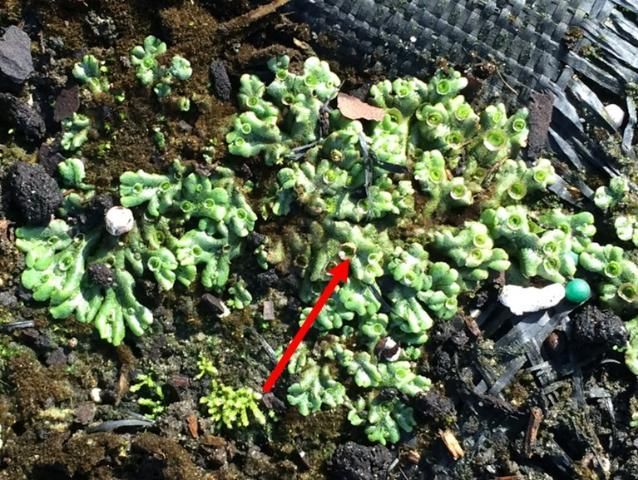
Credit: Chris Marble, UF/IFAS
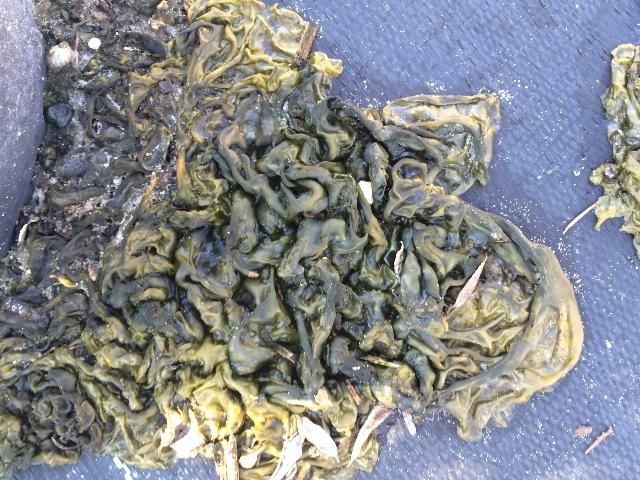
Credit: Chris Marble, UF/IFAS
Chemical Control Methods
There are very few herbicides labeled for use inside greenhouses due to the potential for crop injury from volatilization (production of vapors). It is best to use non-chemical methods when possible, but herbicides can be used to control escaped weeds. Most herbicides labeled for use inside greenhouses are postemergence herbicides, which control weeds after they germinate. These herbicides work best when weeds are small and actively growing. Indaziflam (Marengo®) is a preemergence herbicide labeled for use inside greenhouses and enclosed structures, but it can only be applied to greenhouse floors. Marengo® can be tank-mixed with many different postemergence herbicides to control existing weeds. Flumioxazin (SureGuard) is an additional preemergence herbicide that can be used in enclosed structures, but no plants can be present during the application. Plants can be placed back inside a structure treated with SureGuard after at least 24 hours and after the site has been irrigated.
Table 1 provides a partial list of herbicides labeled for use inside greenhouses. When using these herbicides, always follow the manufacturer's label recommendations in order to achieve the best weed control and avoid crop injury.
Moving Herbicide-Treated Plants Inside Enclosed Structures
Ensure that plants are weed-free before moving them inside a greenhouse or covering for winter protection (Figure 5). Treating plants outside of an enclosed structure and then immediately moving them back inside can cause crop injury from herbicide volatility. In most cases, herbicide-treated plants should be kept outside of an enclosed structure for at least two to three weeks before bringing them inside or covering for winter protection. Each herbicide label may require different time intervals for when plants can be moved inside or covered. Table 2 includes a summary of recommendations from herbicide labels. However, it is important to note that herbicide labels can change, and users must always read each label and follow all precautions and recommendations.
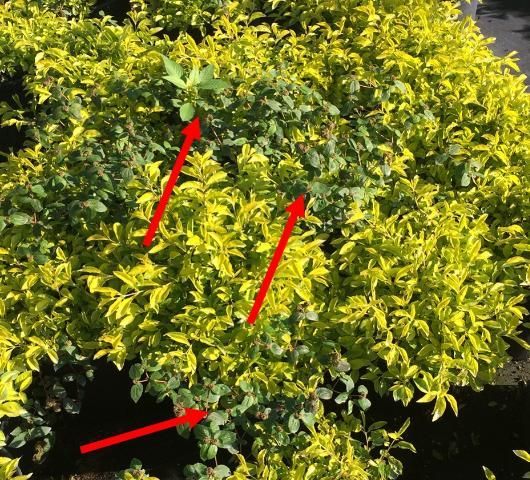
Credit: Chris Marble, UF/IFAS
References
Neal, J. 2015. Greenhouse Weed Control. North Carolina Cooperative Extension Resources Horticulture Information Leaflet. https://content.ces.ncsu.edu/greenhouse-weed-control
Pundt, L. 2014. Greenhouse Weed Control. Fact sheet. University of Connecticut. https://ipm.cahnr.uconn.edu/wp-content/uploads/sites/3216/2022/12/2019Greenhouseweedcontrolfactsheetfinal.pdf
Smith, T. 2014. Managing Weeds in and Around the Greenhouse. University of Massachusetts Amherst. https://ag.umass.edu/fact-sheets/managing-weeds-in-around-greenhouse
Table 1. Herbicides labeled for use inside greenhouses and enclosed structures.
Table 2. Abbreviated list of label instructions for moving treated plants back inside greenhouses, polyhouses, and other enclosed structures after herbicide application.